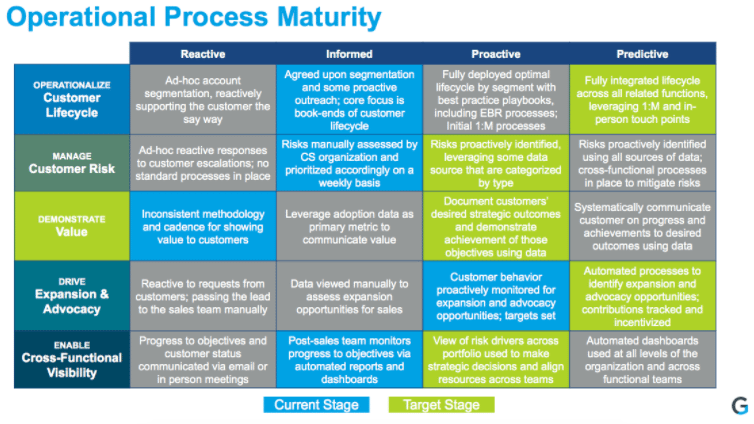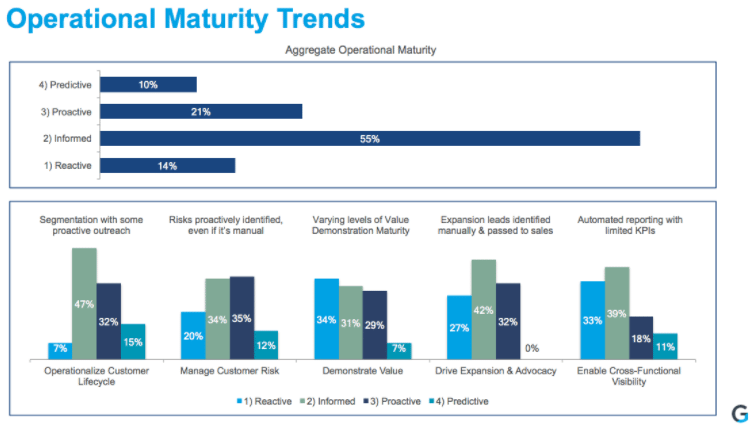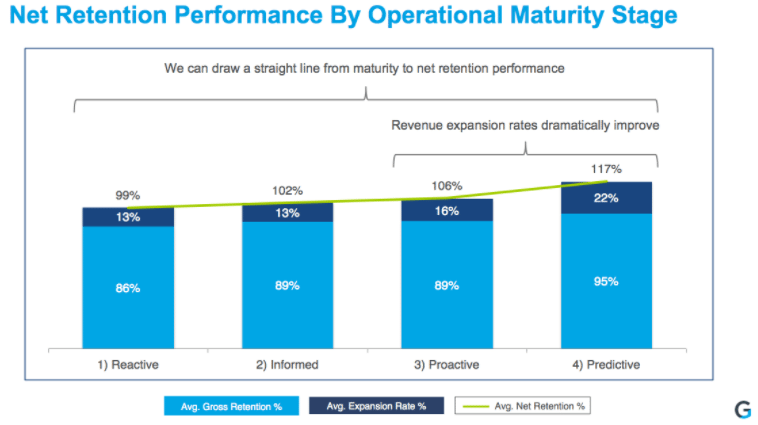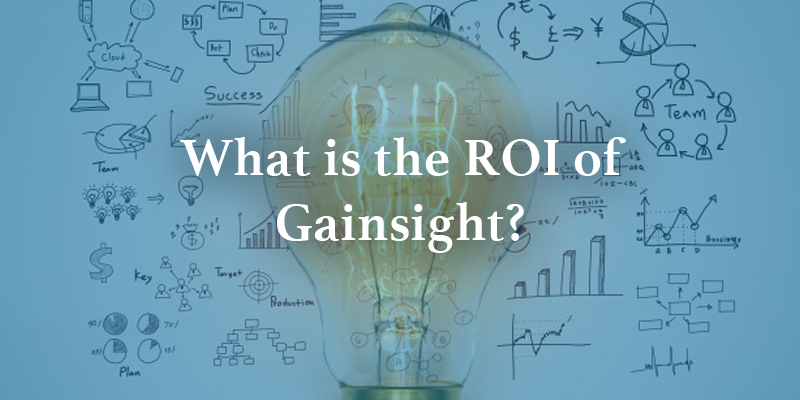Thinking About ROI and Technology
As Gainsight’s Director of Customer Success Strategy, my core focus is helping prospects and customers document and clarify the business and financial impact of their Customer Success Organization. A lot of the time, the conversation is centered around how the Gainsight platform can help enable their teams to better manage their customers and eventually achieve higher net retention rates. When I am talking with any Customer Success leader there is one question that is guaranteed to come up, “What is the ROI of Gainsight?” Allow me to let you in on a little secret: it really depends.
I know, it’s a bit of a cop out. Especially coming from a person that probably says ROI 100 hundred times a day. With that said, I would say the same thing about Salesforce.com, the Fitbit on your wrist, even the car parked in your garage. In short, if your Sales Team doesn’t update pipeline stages in SFDC, if that Fitbit doesn’t make you use the stairs instead of the escalator and you don’t put gas in your car, you are not getting the maximum value from the technology as intended. The same goes for Gainsight. If the operational processes you have established to achieve your Customer Success strategy do not become core tenets of your Gainsight solution, the ROI you can achieve will always be limited.
The Gainsight Maturity Methodology
Because understanding a company’s current and future processes and how the Gainsight platform will help optimize them is core to how a company will achieve maximum value with our technology, we have created a Customer Success Maturity Model. Centered around our Five Pillars of Customer Success, the goal of building a maturity model is to create a simple framework that a prospect can leverage in order to assess their current processes and focus areas for a partnership with Gainsight. We have organized the maturity model across four specific stages of process maturity:
- Reactive – You treat every customer the same and you reactively address risks and expansion opportunities.
- Informed – You have organized your customers and data, but have yet to truly operationalize it.
- Proactive – You are proactively managing the customer lifecycle and using data to drive a programmatic approach to managing risk and expansion opportunities.
- Predictive – You have optimized the lifecycle across all functions and you are leveraging automation to drive scale and maximize visibility.
During the sales cycle we help prospects assess where they stand today in terms of maturity stages across the 5 Pillars of Customer Success. Not only does this allow the prospect to benchmark their current operational maturity against their peers, but it enables both the prospect and Gainsight to drive the following activities key to establishing a mutually beneficial partnership:
- Baseline a prospect’s current strategy and processes
- Identify the core processes a prospect is looking to optimize with Gainsight
- Build the Gainsight feature set required to enable process optimization
- Establish the overall target maturity stage and partnership goals
- Quantify the impact of enabling the prospect to move up the Customer Success Maturity curve

The maturity model is not just leveraged during our sales cycle, but it also used by Customer Outcomes Managers to help drive the customer lifecycle. Specifically for Executive Business Reviews, we use it to assess the following:
- The current state of maturity of the team’s processes
- Identify specific near-term strategies that could be enabled with a specific Gainsight feature(s)
- Help frame the long-term strategic vision for the overall partnership
The idea of a technology vendor creating a maturity model is not new. I am well aware they have been deployed by consulting firms and software companies (run by former consultants—here’s looking at you Gainsight!) for years. What makes me truly excited is we have been able to take our maturity model and link the stages to the financial metrics any recurring revenue company cares most about: gross and net revenue retention.
CCO Summit Maturity Benchmarks
At our annual two-day event for Customer Success and post-sales leaders, we hosted folks at the VP level and above representing over $2.5 trillion worth of market cap collectively. We surveyed ~150 Summit attendees to understand both the operational maturity and financial performance of their business. In terms of operational maturity, there is still lots of work to be done. Per the charts below ~55% of the survey respondents are in the Informed stage.

These trends are really interesting, but not surprising. A large part of the growing Customer Success industry is trying to establish tactical processes to proactively manage the lifecycle, risks, and expansion opportunities. Some words of advice for those CS leaders that have just started this journey and even those that have been doing it for years: don’t stop trying to get better, there is gold at the end of the rainbow!
Linking Maturity To Net Retention Performance
The below chart shows a clear link between operational maturity and net retention performance. As you continue to optimize your team’s processes and streamline workflow between your teams the other departments that interact with your customers, the topline financial impact will follow.

Netting this chart out:
Closing The Loop On ROI
If Gainsight is driving maximum value for a customer, it is impossible to separate the ROI of Gainsight and the ROI of the Customer Success Team(s). This happens for a few of reasons:
- A customer’s team is still responsible for driving the outcome (mitigate risk, close renewal, etc.) with their customers
- Gainsight (the technology) becomes so ingrained in their team’s processes, it becomes difficult to identify where one ends and the other begins
- Gainsight, as a strategic partner, can help influence a customer’s processes with best practice coaching & advisory services
For these reasons, this is why the Customer Success Maturity Model is so valuable. It allows all stakeholders on both sides of the partnership to not solely focus on Gainsight features & functions, but focus on the team wide strategy and underlying processes that are enabled by Gainsight and the potential ROI of moving up the Customer Success Maturity curve.
Thanks for reading this post, and please also read this excellent post from our CCO Allison Pickens on a very similar topic. Becoming Proactive and ultimately Predictive is nearly impossible without a Customer Success technology solution.
Thanks again and please feel free to reach out with any questions.

